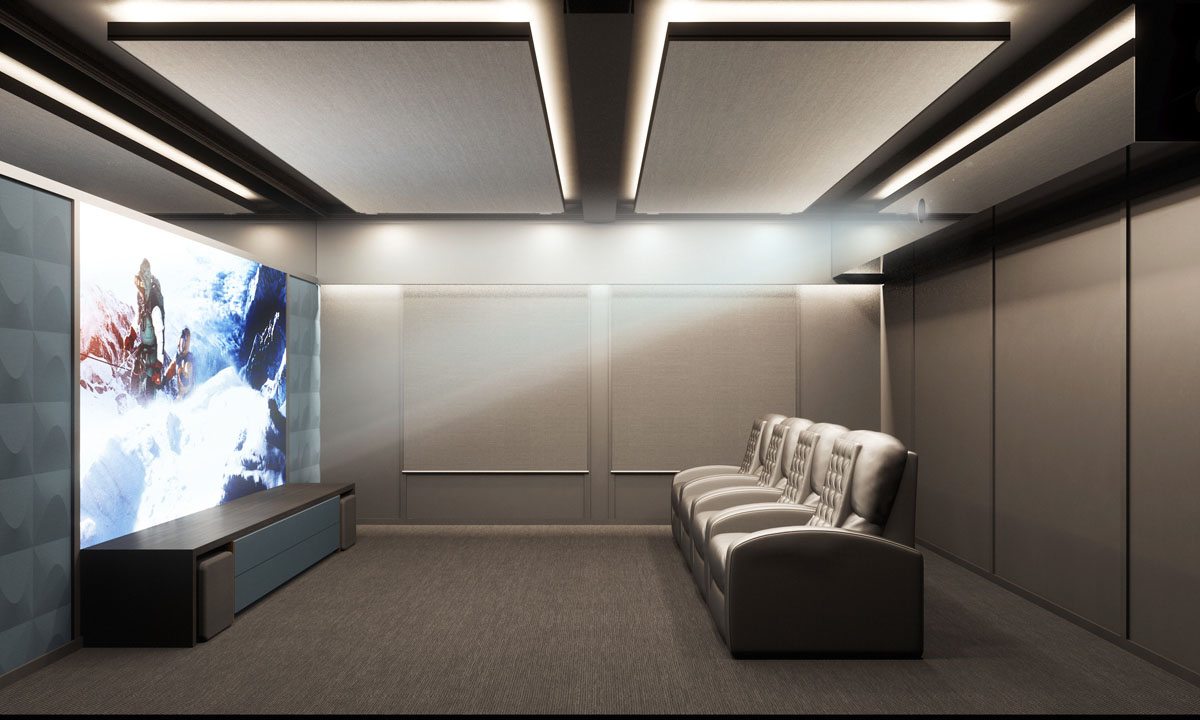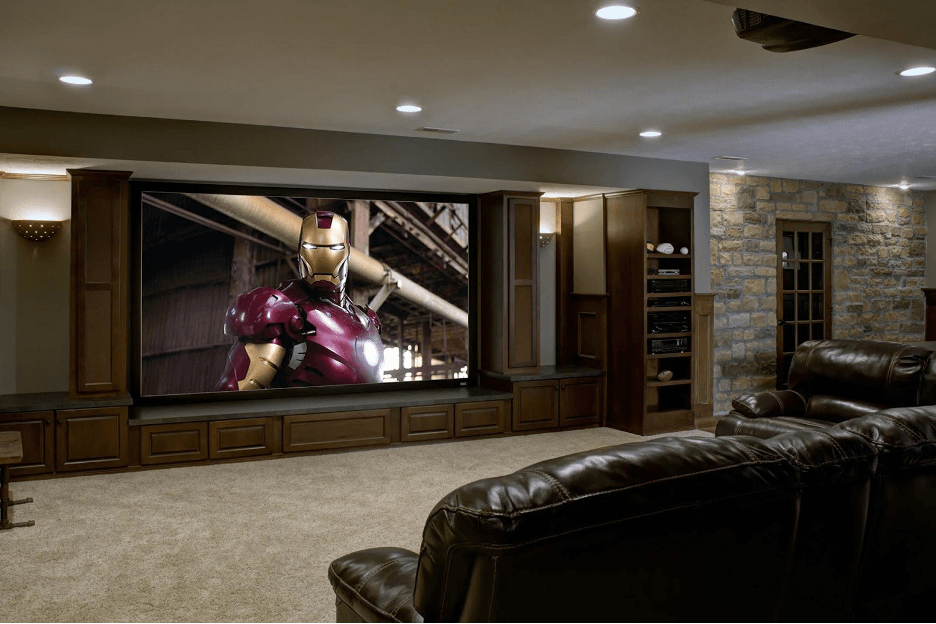Transform Your Living Space with Tampa Home Theater Installation
Transform Your Living Space with Tampa Home Theater Installation
Blog Article
Home Theater 101: Everything You Required to Know for a Cinematic Experience in the house
Producing a home cinema that rivals the motion picture experience of an industrial theater entails mindful consideration of numerous components, consisting of display selection, stereo, and room format. Each element plays an essential role in attaining the desired atmosphere and capability. Whether you are contemplating the excellent screen size or the complexities of border sound, understanding these basics is crucial. As we check out these important parts, it becomes obvious that the selections made can considerably affect your general watching experience, leaving one to ponder how these decisions will form your personal cinema.
Picking the Right Screen
When establishing up a home cinema, choosing the best display can make or damage the seeing experience - tampa home theater installation. The display acts as the focal point of your configuration, influencing photo top quality, watching angles, and general aesthetic. Trick variables to take into consideration consist of screen dimension, type, and resolution
First, determine the proper screen dimension based on your area measurements and seating distance. A basic guideline is to sit approximately 1.5 to 2.5 times the angled display dimension for optimal viewing. Next off, choose in between various display types, such as fixed-frame, mechanized, or retractable displays, each offering unique benefits. Fixed-frame displays typically supply the best photo top quality, while motorized alternatives permit versatility in room usage.
Resolution is one more critical aspect. For a genuinely immersive experience, take into consideration a display designed for 4K or even 8K web content, making certain sharpness and clarity. Furthermore, consider the screen's gain, which impacts illumination and comparison; a higher gain can improve illumination in well-lit rooms, while a lower gain may be extra suitable for darker environments.
Choosing Sound Equipment
Audio tools is an important element of any home cinema system, substantially boosting the overall viewing experience. The choice of audio equipment can determine the depth, clarity, and immersion of sound, essential for developing a cinematic atmosphere.
When selecting audio equipment, consider a surround stereo, which normally consists of a receiver, multiple audio speakers, and a subwoofer. A 5.1 or 7.1 network system is recommended, where the initial number represents the speakers and the 2nd the speaker, giving an immersive soundscape. The receiver is the heart of the system, handling sound and video signals, and should sustain modern layouts like Dolby Atmos for an enhanced spatial experience.
Quality speakers are crucial; appearance for models that provide a balanced sound account with excellent bass response. Floor-standing speakers can generate richer sound, while shelf choices save area. Additionally, think about cordless alternatives for simplicity of installation, although wired systems often provide exceptional efficiency.

Ideal Seating Plans
Producing an ideal home cinema experience hinges significantly on optimum seating setups. The plan of seats plays a critical duty in both comfort and watching top quality, directly influencing the overall motion picture experience.
First, take into consideration the screen size and viewing range. A common standard is to position seats at a distance approximately 1.5 to 2.5 times the angled dimension of the screen. This ensures an immersive experience without stressing the eyes.
Following, altitude is crucial. The back rows need to be greater than the front to stay clear of obstructions if your seating is in a tiered style. For flat seating, make certain that the front row is not as well close to the display, and that everybody has a clear view.
Moreover, think about the plan in regards to social dynamics. Group seating can improve the communal experience, while individual seats might be chosen for individual watching.

Last but not least, prioritize convenience with ergonomic seats that sustains extended watching durations. Incorporating recliner chairs or cushioned seats can substantially improve the experience, making the home theater a preferred location for both home entertainment and relaxation.
Lighting and Setting
Efficient lighting and setting are important parts of a properly designed home movie theater, as they substantially affect the watching experience. The appropriate lights can improve the motion picture feeling, while inadequate choices this article can interfere with find this it. For optimum results, consider a layered illumination method that consists of ambient, task, and accent illumination.
Ambient lights provides general lighting, making certain that the area is not totally dark, which can stress the eyes. Dimmer switches are extremely recommended, enabling modifications based upon the content being viewed. Job lighting, such as wall sconces or floor lamps, uses practical lighting for tasks like analysis or navigating the space without interrupting the general ambience.
Accent lighting can be utilized to highlight building features or create centerpieces, including deepness and interest to the room. LED strip lights behind displays or along racks can offer a refined glow that improves the visual experience without frustrating the visitor.

Wiring and Installation Tips
A tactical circuitry arrangement is essential for accomplishing optimum performance in your house cinema system. Appropriate electrical wiring not only guarantees top notch audio and video signals however additionally boosts the general click here to read visual of your area. Begin by drawing up your format, recognizing where each component will be positioned, including your display, speakers, and receiver.
When picking cable televisions, prioritize top notch, appropriately assessed circuitry to minimize signal loss. HDMI cable televisions ought to be used for video clip connections, while audio speaker cord must match the specs of your speakers and amplifier. Decide for in-wall rated wires to conform with safety standards and maintain a tidy look.

Verdict
In summary, creating an outstanding home cinema experience requires cautious consideration of different aspects, consisting of screen selection, audio equipment, seating plans, illumination, and wiring. By focusing on these variables, a motion picture atmosphere can be successfully reproduced, allowing for immersive viewing experiences that match conventional movie theater settings.
Producing a home movie theater that equals the motion picture experience of an industrial theater includes careful consideration of multiple components, including screen selection, audio systems, and area format.When establishing up a home movie theater, choosing the ideal screen can make or break the viewing experience. Next off, choose between numerous display types, such as fixed-frame, mechanized, or retractable displays, each offering unique advantages. For a truly immersive experience, consider a display designed for 4K or also 8K material, ensuring sharpness and quality.In recap, creating a remarkable home movie theater experience needs cautious factor to consider of different elements, consisting of screen option, audio devices, seating setups, lights, and electrical wiring.
Report this page